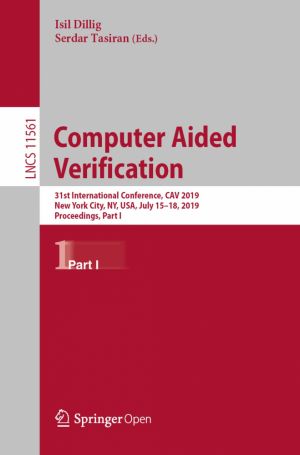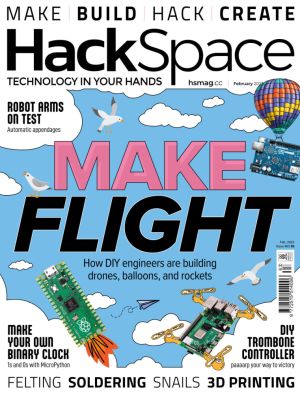
This book provides an algorithmic perspective to autonomous robotics to students with a sophomore-level of linear algebra and probability theory. Robotics is an emerging field at the intersection of mechanical engineering, electrical engineering, and computer science. With computers becoming more powerful, making robots smart is getting more and mo...

This book bridges the gap between playing with robots in school and studying robotics at the upper undergraduate and graduate levels to prepare for careers in industry and research. Robotic algorithms are presented formally, but using only mathematics known by high-school and first-year college students, such as calculus, matrices and probability. ...

This book introduces readers to robotics, industrial robot mechanisms, and types of robots, e.g. parallel robots, mobile robots and humanoid robots. The book is based on over 20 years of teaching robotics and has been extensively class tested and praised for its simplicity.It addresses the following subjects: a general introduction to robotics; bas...

This open book mainly focuses on the safe control of robot manipulators. The control schemes are mainly developed based on dynamic neural network, which is an important theoretical branch of deep reinforcement learning. In order to enhance the safety performance of robot systems, the control strategies include adaptive tracking control for robots w...

This open proceedings presents a good overview of the current research landscape of industrial robots.The objective of MHI Colloquium is the successful networking at both academic and management level. Thereby, the colloquium focuses an academic exchange at a high level in order to distribute the obtained research results, to determine synergy effe...

You've mined for diamonds, crafted dozens of tools, and built all sorts of structures - but what if you could program robots to do all of that for you in a fraction of the time?
In Coding with Minecraft, you'll create a virtual robot army with Lua, a programming language used by professional game developers. Step-by-step coding project...

This open book examines recent advances in how artificial intelligence (AI) and robotics have elicited widespread debate over their benefits and drawbacks for humanity. The emergent technologies have for instance implications within medicine and health care, employment, transport, manufacturing, agriculture, and armed conflict. While there has been...

Whether you want to build robots, smart devices, or any other electronically controlled projects, this is the book you need. We take you through how to program and connect an Arduino microcontroller board, then explore some great projects to make with it.
- Build a four-legged walking robot;
- Create a Tetris-inspired clock;
- Grow your own ve...

The book set LNCS 11561 and 11562 constitutes the refereed proceedings of the 31st International Conference on Computer Aided Verification, CAV 2019, held in New York City, USA, in July 2019. The 52 full papers presented together with 13 tool papers and 2 case studies, were carefully reviewed and selected from 258 submissions. The papers were organ...

This timely book addresses the conflict between globalism and nationalism. It provides a liberal communitarian response to the rise of populism occurring in many democracies. The book highlights the role of communities next to that of the state and the market. It spells out the policy implications of liberal communitarianism for privacy, freedom o...

Over the last few years, members of the O'Reilly community have increasingly turned their attention to hardware. It's getting much easier to design, prototype, build and market hardware, and it's getting easier to integrate software and hardware into fluid packages of intelligence, beauty, and intuitive design. Hardware and software ...

This book establishes the foundations needed to realize the ultimate goals for artificial intelligence, such as autonomy and trustworthiness. Aimed at scientists, researchers, technologists, practitioners, and students, it brings together contributions offering the basics, the challenges and the state-of-the-art on trusted autonomous systems in a s...

Communication is increasingly moving beyond 'ways of seeing' to 'ways of feeling'. This Open Access book provides social design insights and implications for HCI research and design exploring digitally mediated touch communication. It offers a socially orientated map to help navigate the complex social landscape of digitally me...

How does the brain orchestrate perceptions, thoughts, and actions from the activity of its neurons? Addressing these challenging issues requires methods with sufficiently high temporal and spatial resolution of neuronal activity in both local and global networks as well as theories to advance understanding how different levels of brain dynamics int...

This book provides a thorough overview of the ongoing evolution in the application of artificial intelligence (AI) within healthcare and radiology, enabling readers to gain a deeper insight into the technological background of AI and the impacts of new and emerging technologies on medical imaging. After an introduction on game changers in radiology...

This book is based on the MOOC Responsible Innovation offered by the TU Delft. It provides a framework to reflect on the ethics and risks of new technologies. How can we make sure that innovations do justice to social and ethical values? How can we minimize (unknown) risks?
The book explains:
- The concept and importance of responsible innovati...

This open book presents the results of the "Collaborative Embedded Systems" (CrESt) project, aimed at adapting and complementing the methodology underlying modeling techniques developed to cope with the challenges of the dynamic structures of collaborative embedded systems (CESs) based on the SPES development methodology.
In order to ma...

This open book introduces the reader to the foundations of AI and ethics. It discusses issues of trust, responsibility, liability, privacy and risk. It focuses on the interaction between people and the AI systems and Robotics they use. Designed to be accessible for a broad audience, reading this book does not require prerequisite technical, legal o...

In this concise yet comprehensive open book, future inventors are introduced to the key concepts of Cyber-Physical Systems (CPS). Using modeling as a way to develop deeper understanding of the computational and physical components of these systems, one can express new designs in a way that facilitates their simulation, visualization, and analysis. ...

This open book is among the first cross-disciplinary works about Manufacturing 4.0. It includes chapters about the technical, the economic, and the social aspects of this important phenomenon. Together the material presented allows the reader to develop a holistic picture of where the manufacturing industry and the parts of the society that depend ...

This open book focuses on robot introspection, which has a direct impact on physical human - robot interaction and long-term autonomy, and which can benefit from autonomous anomaly monitoring and diagnosis, as well as anomaly recovery strategies. In robotics, the ability to reason, solve their own anomalies and proactively enrich owned knowledge is...

An introduction to the engineering principles of embedded systems, with a focus on modeling, design, and analysis of cyber-physical systems.
The most visible use of computers and software is processing information for human consumption. The vast majority of computers in use, however, are much less visible. They run the engine, brakes, seatbelts,...

Flying machines: humans have always dreamed about flight, but with our puny arms and lack of feathers it's something we've struggled with. No more! Join us as we explore the best, cleverest and most innovative home-made flying machines. Icarus would have been proud!
- Behold: the world's first articulated print-in-place chocolate ...
